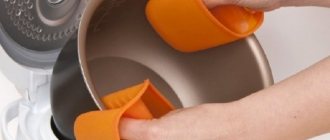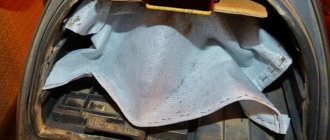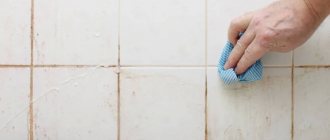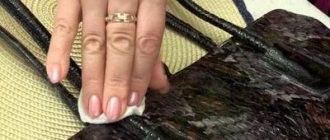How to wash a multicooker correctly? What can I wash it with? Features of washing a multicooker How to clean the body? How to clean the lid? Cleaning the heating element How to clean the steam valve? How to clean the condensate collector? How to properly wash the multicooker bowl? Proper washing of a non-stick bowl How to wash a ceramic bowl? How to remove grease, carbon deposits and unpleasant odors? Conclusion
In order for your multicooker to last as long as possible, it is important to properly care for it and ensure that it is always clean. Read our article about how to wash a multicooker inside and out, how to clean it from grease or burnt food, and what products can be used.
What parts of the multicooker need to be cleaned?
Of course, first of all you need to clean those parts that come into contact with food. You will wash them after each use. In addition, the device has internal elements that also sometimes require cleaning.
| Multicooker part | Processing rules |
| Lid | It requires regular washing after each use, as condensation and grease droplets accumulate on the surface of the lid. Subsequently, the settled residues will give the new dish an unpleasant aroma and taste. |
| Bowl | Be sure to wash the bowl after each use, following the cleaning instructions depending on the material from which it is made. |
| Bottom and walls | It is especially important to monitor the condition of the bottom and walls of the device when something has “escaped” or boiled away. It is prohibited to pour liquid into the housing. Soot and food residues are removed with a suitable substance. |
| A heating element | Occasionally, but still needs cleaning, as over time carbon deposits appear on its surface. |
| Disk | It is located around the heating element and also requires cleaning from carbon deposits. |
| Valve on the lid | Steam and grease regularly accumulate here, so you need to wash the valve as often as possible. For most models it can be removed and cleaned. |
| Moisture collector | Water from the lid drains into it, which evaporates during cooking. It is enough to drain the water from the container from time to time and clean it with detergent. |
Each instruction manual for the multicooker describes the component parts in detail; if you do not find any part, look for it in the schematic drawing.
Cleaning the bowl container
When the bowl is washed, before inserting it into the multicooker, check for dirt inside. Perhaps drops or food particles got there during cooking. If this is the case, remove any dirt from the bowl container with a damp cloth to avoid the formation of carbon deposits. Pay special attention to cleaning the bottom, as there may be crumbs that can scratch the bowl. After wiping the container with a damp cloth or dry cloth, remove any remaining moisture and leave the multicooker open for a while so that it completely dries from the inside. Always check the condition of the heating element - it must be dry and clean.
Chemicals
The range of household chemicals includes products specially designed for cleaning multicookers. Their composition copes well with grease and food residues and does not harm the surface. Effectively removes grease and dirt from ceramic or Teflon surfaces. Eliminates odors and has antibacterial protective properties. Sometimes the detergent kit includes a special sponge for cleaning non-stick surfaces.
This product can be replaced with gel or foam for kitchen appliances, as well as dishwashing liquid with a neutral pH level.
Drying
After carrying out the cleaning procedure, all structural parts of the kitchen appliance must be thoroughly dried.
Drying is carried out using one of the following methods:
- in a natural way - spread a large towel on a horizontal surface, place all the parts on it and wait for them to dry;
- manually - arm yourself with a napkin or rag (made of soft, natural fabric) and thoroughly wipe all surfaces of each element of the multicooker;
- A household hair dryer will help speed up the drying process: turn on the device, direct the air flow to the parts. Make sure that the outgoing air is not too hot.
IMPORTANT! After cleaning the multicooker, it is not advisable to immediately connect it to the power supply - leave the device unplugged for 1.5-2 hours with the lid open.
Traditional methods
If you don’t have a store-bought product at hand, use what you have in the kitchen. They cope well with greasy stains or food residues and do not harm the coating.
Laundry soap
A universal product that copes with almost any contaminant. Using it, try to clean the multicooker lid from traces of grease.
Lather the soap and apply to a sponge. Rub the surface with the hard side of the sponge and leave the solution for 10-15 minutes. After this, rinse the substance with water and wipe the lid with a dry soft cloth. For best results, add a few drops of dishwashing detergent to the soap solution.
Laundry soap not only removes grease and dirt, but also eliminates odors.
Lemon water
If the grease stains are too old, lemon juice will help soften them. Mix 1 liter of water with the juice of one lemon and pour into a bowl. Turn on the “steam” mode for 10 minutes. During this time, citric acid vapor will fall on the dirt and soften dried-on food and fat.
You can also wipe the lid with a cloth soaked in water with citric acid or juice.
Vinegar
Using vinegar, you can eliminate not only dirt, but also unpleasant odors.
Dissolve 1 tbsp in a liter of warm water. spoon of 9% vinegar and wipe the surfaces. For more stubborn stains, use the steam function. Pour a glass of water into the bowl and add 1 teaspoon of vinegar. Turn on the appropriate mode for 10 minutes, and after it finishes, wipe the bowl and lid first with a damp and then with a dry cloth.
Soda
Baking soda is an excellent antiseptic that absorbs dirt and odors.
Prepare soda slurry from 50 ml of water and 3-5 tablespoons of baking soda. Apply the mixture to a sponge and wipe the stains. Leave the substance to act for 10-15 minutes, and then rinse with warm water. At the last stage, wipe all surfaces with a dry cloth. Please note that it is not recommended to wash a Teflon or ceramic bowl with soda, as its particles can damage the coating.
Cleaning the device under running water
How to clean a multicooker from carbon deposits and is it possible to wash it under the tap? A multicooker is an electrical appliance, so it is not recommended to completely immerse it in water.
After cooking, the device is turned off from the power supply and cooled. Then the outer surface is wiped from drops of water and grease with a damp cloth or napkin.
If the food escapes due to incorrect temperature, then you will need to make a little effort to wash the inner surface:
- Pour two mugs of water into a cleaned bowl. Close the lid and set the “steaming” mode.
- Wait three to four minutes. Turn off the device and remove the lid.
- Clean off any remaining dirt with a damp sponge.
- If food gets on the heating element, it can be removed using a non-metallic stiff brush. Then wipe with a paper towel and dry.
To get rid of carbon deposits, you can use baking soda. Sprinkle it on a damp cloth, then gently wipe the heating element. Remove any residue with a dry sponge.
Do I need to wash the multicooker after purchase?
You shouldn’t immediately after purchasing, put food into the bowl and start cooking. It is likely that during production and sale the device was exposed to various influences, so before use, it is better to wash all parts that will touch the products. Wipe the outer and inner parts of the body with a damp cloth, and the bowl and lid with a soapy water solution.
Before first use, pour a glass of water into the bowl and turn on the “steam” mode for 10 minutes. The procedure will help get rid of residual substances applied during final processing of the product at the factory.
Why not?
There is a heating element hidden inside the multicooker. Thanks to it, the device heats up to the desired temperature. And the entire core is literally dotted with microcircuits that provide the choice of cooking program. The display is an electronic panel with many contacts.
Water getting under the multicooker body can cause:
- damage to contacts;
- short circuit.
The electrical part is only conditionally protected from moisture. There is a removable bowl for water and food. Neither liquids nor solids should get into the remaining parts of the multicooker. The device cannot be washed with water, dipped or filled. It's the same as washing a TV, hair dryer, smartphone.
If the multicooker has already been under the tap, you should turn it upside down as soon as possible and allow the water to drain. It should dry naturally in a well-ventilated area. Then there is a chance that after 6–8 hours the device will work again.
How to remove odor in a new multicooker
It happens that after opening the package, an unpleasant plastic smell emanates from the multicooker. If you do not eliminate it and start cooking, the food will end up with an unpleasant aroma and taste.
To remove this smell, use available substances: lemon juice or vinegar. Mix the selected product with water, pour into the bowl and turn on the steamer mode for 20–30 minutes. The unpleasant smell will disappear.
Moisture collector
Cleaning this element is necessary after each use of the multicooker, since all the liquid and fat accumulated on the lid roll into the moisture collector. To clean, empty the water from the container and then use liquid kitchen soap or dishwashing detergent. To eliminate food odors (for example, if you were cooking fish), use baking soda or vinegar.
Methods for cleaning the multicooker lid?
Multicookers come with a removable or non-removable lid. Care for it is selected depending on the modification of the device.
With removable cover
Wash the lid, which is completely removable from the body, after each use of the multicooker. Before washing, disassemble it into its component parts: the inner disk, the steam valve and the rubber seal.
- Rinse the steam valve under running warm water. It is not necessary to do this every time, just make sure that its holes do not become clogged.
- Pay special attention to cleaning the rubber seal, as it absorbs odors too much.
- Wash the inner disk with a soapy sponge and rinse.
- After the procedure, be sure to dry all parts, and only then assemble the lid.
With non-removable lid
To clean the fixed cover, follow these steps:
- Wrap the multicooker body in polyethylene, making sure there are no gaps.
- Tilt the device.
- Wash the lid with a soapy sponge.
- Wipe with a damp, clean cloth and then with a dry one.
- Remove the plastic when you are sure the lid is completely dry.
Frame
The body of the household appliance is made of plastic, so it can only be washed with neutral agents: the use of products containing acids, alkalis or abrasive components will damage the surface.
To remove splashes and grease deposits, wipe the outer parts of the multicooker body with soapy water, rinse off the product with clean water and wipe the surface dry.
The glass cleaner effectively copes with various body contaminants:
- spray the drug onto problem areas;
- After 1-2 minutes, wipe the treated surfaces with a dry, soft cloth.
How to clean the multicooker bowl?
The main rule for washing the bowl is not to use metal or hard sponges or abrasive substances, and clean very carefully.
From burnt food
If food is burnt in the bowl, never clean it with abrasives or hard brushes.
To clean the container, fill it with warm water and add 1 cap of Sypha. Leave the bowl to soak for 1-2 hours, and then remove excess dirt with a sponge.
You can also avoid burning if you follow simple recommendations:
- set the mode temperature correctly, without exceeding the maximum set by the program;
- Wash the cup after each use;
- make sure that the valves are not clogged;
- Do not fill the container with more than the permitted volume.
From fat
Remove grease stains using dishwashing detergent. Wipe the interior and exterior of the multicooker with a soapy sponge and then rinse with water. At the last stage, wipe all elements of the device dry.
From burning
Usually carbon deposits form on the bottom of the multicooker under the bowl. To get rid of burning:
- Wipe the bottom with a damp cloth.
- Cover the surface with baking soda.
- Leave the substance for 15 minutes.
- Remove excess soda and carbon deposits with a damp soft cloth, so as not to scratch the coating.
- Wipe the bottom with a dry cloth.
From scale
If scale appears on the surface of the bowl, citric acid or vinegar will help. It is important to start the fight at the first appearance of plaque, and not wait until the scale completely covers the bowl.
Pour 1 liter of water into a container and add 1 tbsp. a spoonful of vinegar or citric acid. Turn on the steam mode for 10-15 minutes. Then drain the water and wipe the bowl with a dry cloth.
Wipe the internal and external parts of the multicooker on which plaque has formed with a soda solution. Leave the mixture on the surface for 10–15 minutes and then wipe with a damp cloth.
From mold
If, after washing, the bowl and lid of the multicooker were not sufficiently dried, mold fungi may appear in areas of excess moisture. To remove dirt and disinfect the surface, use regular soda. For this:
- Fill the bowl with water to the maximum level.
- Dissolve a small amount of baking soda in water.
- Set the soup mode or any other program so that the water boils.
- Wait until the appliance has finished operating and rinse the bowl.
- Wipe all surfaces with a dry cloth.
How to prevent pollution: tips and tricks
To clean your multicooker as little as possible, you just need to follow simple rules:
- Remove dirt as soon as you notice it.
- Make sure that crumbs do not fall under the bowl onto the heating disk.
- Before cooking, check that there are no crumbs or wet spots at the bottom of the bowl.
- Place the multicooker only on a clean surface.
- Wash the bowl and wipe the body of the device after each cooking.
- Make sure that the steam valve is not blocked, otherwise a rotten smell will appear.
How to clean the heating element
The heating element is located in the bottom of the device under the bowl. To ensure a long service life of the device, clean the heating element at least once a month.
You can clean it at the same time as the bottom with regular soda. To prevent moisture from collecting inside, place absorbent wipes on the bottom before the procedure. Wet the surface with a damp cloth and cover it with baking soda for 10–20 minutes. After this, remove excess solution and dirt with a damp sponge and wipe the surface dry.
Please note that you can clean the heating element only by unplugging the device cord from the outlet.
What to do in case of heavy contamination?
The multicooker, like all electrical appliances, should not be washed under the tap. However, if your favorite gadget is very dirty, then to clean it you need to remove the electronic component. After this, the parts can be soaked in detergents and washed under the tap.
Reference! If the multicooker is plugged in immediately after washing, a short circuit may occur.
Washing the device under running water will damage the contacts, and in most cases, further use will be impossible. Timely care after each cooking will keep the multicooker clean for a long time.
Subscribe to our Social networks
How to clean a multicooker valve
One of the most important elements of a multicooker is the steam valve. If it becomes clogged or becomes unusable, the cooking process may be disrupted. Regular valve care will help to avoid such phenomena. For most models it is removable, so there should be no problems with washing it.
Immediately after each use of the device, remove the valve and rinse with warm running water. If there is grease or other contaminants on the surface, use dishwashing detergent to wash. After cleaning, be sure to dry the part, and only then return it to its place.
Additional recommendations
When cleaning, you will need simple tips to ensure impressive results. Be sure to use them:
- try not to apply the product to sealing materials; particles may remain even after thorough rinsing;
- Wash the multi-cooker lid on the same day you use the appliance for cooking. Then the contaminants will not yet have time to be absorbed into the material, which means that removing them will be as easy as shelling pears;
- To clean small parts or hard-to-reach areas, toothpicks, matches, and cotton swabs are useful. They penetrate into places where fingers cannot reach;
- Wipe all rubber seals dry with a clean cloth after washing.
Just a few minutes spent cleaning the device will restore its attractive appearance, and its lid will be shiny and spotlessly clean. Cooking will become even better, and the multicooker itself will serve you for at least another ten years.
How to remove odor in a slow cooker
An unpleasant smell in a multicooker after cooking can appear due to various reasons, for example, you cooked fish or simply forgot that there was food left in the bowl and did not look there for a long time. You can deal with any unpleasant odor, the main thing is to use rational methods.
How to get rid of fish smell
To prevent side dishes and desserts from smelling like the fish you cooked in a slow cooker the day before, use table vinegar. Fill the bowl with water and add a little vinegar at the rate of 2 tbsp. spoons per 2 liters of liquid. Turn on the “steam” mode for a maximum of half an hour. Then rinse the bowl with running water and wipe dry with a towel. If the smell does not disappear, repeat the procedure, increasing the program time.
How to eliminate mold smell from a multicooker
If you smell a moldy smell when you open the multicooker lid, it means there is mold in the container. If cleaning the bowl with soda did not help, and the unpleasant aroma remains, disassemble the device into its component parts and treat each of them with a soda solution. After the procedure, the smell should go away.
How to get rid of the smell of rotten food
The smell of rotten and musty food can be removed by substances and products with high adsorbing properties. These include: coffee, black tea and even sea salt. To get rid of an unpleasant odor:
- Pour coffee beans into the bowl and leave for 12 hours. During this time, the grains will absorb all foreign odors.
- Rinse the bowl with black tea. Please note that tea leaves cannot be used for ceramic containers, as the coating may darken.
- Place sea salt on the bottom of the bowl and heat for 10 minutes. Leave the substance in the slow cooker overnight and the smell will go away. After the procedure, be sure to rinse and wipe the container dry.
How to remove odor from rubber seals
You can remove the smell from the sealing gum by “boiling” water with citric acid in a slow cooker.
Rarely, but still there are cases when the smell does not go away under any circumstances. Unfortunately, in such situations, only replacing the rubber seal helps.
Multicooker care
In order not to subsequently deal with persistent dirt and unpleasant odors, follow the rules for caring for the components of the multicooker.
Bowl care
Clean the bowl immediately after contact with food. The coating materials of the containers do not tolerate sudden temperature changes, so wait until the bowl cools down and only then place it under running water. To wash, use dishwashing detergent or just warm water. Never use abrasives, metal sponges or wash the bowl in the dishwasher.
Cover care
Also clean the lid regularly after cooking. Wash according to its modification (removable or not). If you use the device regularly, once a month, disassemble the cover and clean the parts separately. Before replacing the cover, be sure to wipe all its elements dry.
Interior care
The interior of the multicooker does not need to be cleaned every time. However, make sure that it does not become dirty. Carry out the cleaning procedure once a month. Wipe all parts and surfaces with a damp cloth. If there are greasy stains on the disc, heating element or walls, use a soda solution to remove them. After the procedure, wipe all parts dry and dry the device for a while without closing the lid.
The better you treat your multicooker, the longer it will work and will delight you with delicious dishes without any foreign smell or taste. Your main task is to keep the device clean, regularly clean the bowl and its components and follow simple rules for handling them.
Manufacturers' requirements
In principle, the basic requirements of all manufacturers come down to a few rules, following which you will quickly clean the multicooker, and without risk to the equipment. Let's look at them using the example of one of the most popular models of the Polaris brand. (For information on how to properly wash a Redmond multicooker, see the video at the end of the article).
- It is strictly forbidden to wash the multicooker while it is turned on. Moreover, if the device has just been used, unplug it and wait until all components have completely cooled down.
- Immediately after the dish is ready, transfer it to another container and prepare the multicooker for cleaning. To do this, disconnect all removable parts and fill them with warm water.
- Check for condensation in the special receiver. If there is condensation in the receiver, be sure to drain it and dry the receiver itself using a paper or cloth napkin.
- If the valve is clogged, it should be completely disassembled and washed under running water.
- Before assembling the structure, make sure that all components are dry. If there are wet places, wipe them dry, and only then proceed with assembly.











